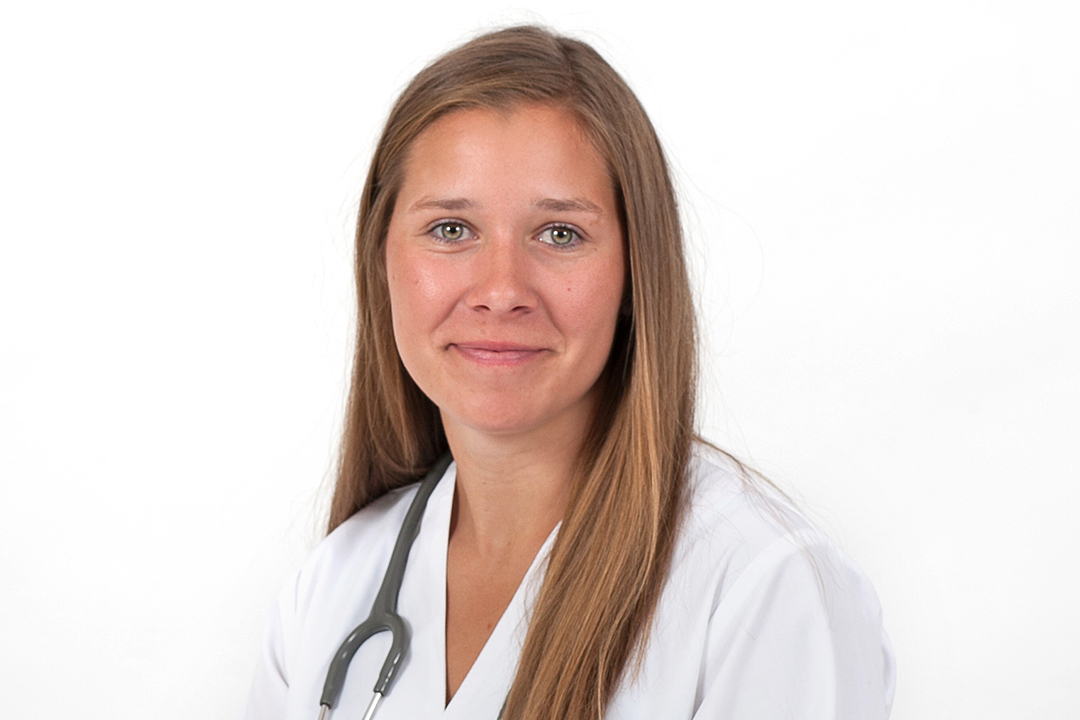
Rural roots run deep for Manitoba vet student
First-year veterinary student Marianne Sytnyk has always been happy living the farming lifestyle — even when it meant working all night or spending hours outside in -40 degree Celsius weather, she enjoyed every minute of it.
By Lynne Gunville“Cattle ranching and grain farming have been a part of my family for over five generations, and having the history and traditions of the farm stem from my great-great-great grandparents and pass on to me really makes me appreciate the life I got to grow up with,” says Sytnyk, who began her studies at the Western College of Veterinary Medicine (WCVM) in August.
While Sytnyk started out helping as a “tail holder,” she was always keen to do any chores that needed to be done on the family’s cow-calf operation in Oakburn, Man. As she grew up, she tackled every job that came along — a long list of tasks that included tagging, pulling calves, vaccinating, feeding and every job in between.
Although beef cattle were always her priority on the farm, Sytnyk’s interests expanded to include horses once she bought her own quarter horse for work and play around the ranch. Over the years, the family’s horses taught her a lot about hoof care and metabolic diseases, and she describes them as “a true test of my patience and demeanor.”
Sytnyk had many opportunities to work with the local veterinarians, particularly during calving season, and she was always impressed that they genuinely enjoyed their jobs, even the difficult aspects of large animal veterinary medicine.
“I was always drawn to a veterinary career, and I knew I needed a career that came with hard work,” says Sytnyk. “I remember being excited about taking a cow to the vet clinic for a caesarean, even before I could drive the truck and trailer on my own, and once I had my licence, I was the one delegated to take our animals in. Having that first-hand experience made the career seem natural to me.”
Since she was already experienced at working with large animals, Sytnyk set out to try new things and volunteered at several clinics and organizations that treated animals less familiar to her — including companion animals as well as bison and pigs.
She also spent a semester studying animal welfare at the Swedish University of Agriculture Sciences and enjoyed the chance to meet students from all over the world with different backgrounds and animal welfare perspectives.
In addition to working on her goal of a veterinary career, Sytnyk shared her passion for agriculture by volunteering as a classroom presenter with Agriculture in the Classroom Saskatchewan — an organization aimed at connecting kids and agriculture.
Sytnyk used her background to educate elementary students about where their food comes from —focusing on the grains, pulses and production animals grown in Western Canada.
“I love sharing my knowledge and seeing the kids’ enthusiasm as they tell personal stories about their own gardens or their grandparents who live on a farm,” says Sytnyk. “I think it’s very important for kids to know where their food comes from, and it’s essential to the longevity of the agricultural market.”
Now a student in the WCVM’s four-year Doctor of Veterinary Medicine (DVM) program, Sytnyk is particularly enjoying the chance to learn the “why” behind so many of the procedures and treatments she’s seen over the years.
She plans to continue promoting agriculture and agricultural practices with the goal of ensuring consumers understand the whole story — particularly the dedication of scientists and producers to developing high quality, nutritious food that’s produced quickly enough to ensure everyone has enough to eat.
As for her veterinary career, Sytnyk is unsure about where the next four years will take her. She’s interested in food animal production, and owning her own mixed animal practice is something that she’s imagined for a long time. “I’ll probably end up with my hand in the backside of a cow — and hopefully I’ll be expanding my own herd of cattle,” says Sytnyk.
